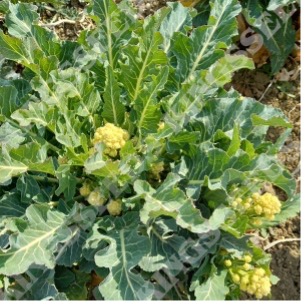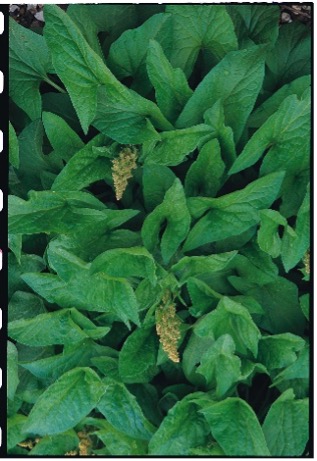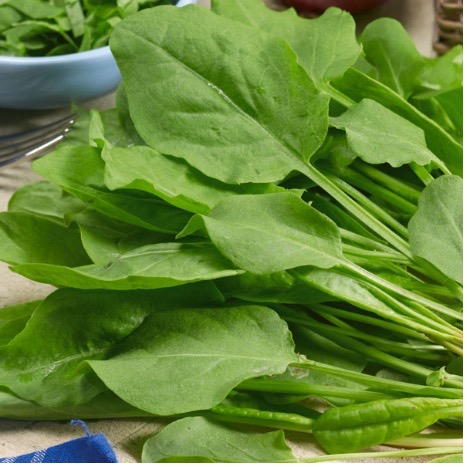April Hints & Tips - Perennial Vegetable
I thought this month I would research and write about something different and something not talked about much at all, that is perennial Vegetables. These perennials of course include the likes of Asparagus, some herbs and Rhubarb but the plants below I think you will find are just as exotic.
There are many perennial vegetables which are hardy and that reproduce themselves each year and in some cases, can be harvested throughout the year, counteracting the “dead zone”. That is to say those months where it is too cold for growing. So, let’s look at a number of the perennial Greens, a salad leaf and an onion and see what to expect when growing them.
PERENNIAL GREENS
Sea Kale (Crambe maritima):- is a hardy herbaceous perennial that has thick waxy leaves. It can be found on southern shores in the UK. It has edible shoots, leaves, honey-scented flowers and seed pods. It is Hardy to about -28°C. It is tolerant to most soils but is prone to stem/root rot in clay. It lives for many years in well-drained soils and is tolerant to drought and shade but prefers a sunny spot. For the production of blanched shoots that one can eat, one can place upturned buckets over the plant for about a month or two when the first signs of new shoots are seen in late winter. The long blanched shoots can be removed when they are to your liking. For blanched shoots earlier in the year plants need to be dug-up in late autumn, potted up and placed in a cool dark room (59-70 degrees F) to sprout pale shoots over winter.
Daubenton Kale:- is a perennial kale that forms an attractive shrub of mild and nutty flavoured leaves. The outer leaves tend to spread horizontally at first and often root where they touch the ground. The plant is propagated by cuttings and the clumps formed can live for many years. It likes full sun, in rich, heavy soil with a Ph above 6. Allow the leaves to drop down to the ground and root to increase the lifespan of the plant. Pick the leaves from the plant once established. Harvesting can continue throughout the winter if growth continues. One plant will probably be sufficient to feed two people during the warmer months of the year but two plants enable the plants to be harvested in the winter months when the leaves are smaller and regrowth is slower.
Nine Star Broccoli :- produces multiple white broccoli sprouts, some large, for several years in a row. To maintain the plant production, it is important to feed the plant well and remove all the sprouts before they flower. The plants are hardy at about -10°C and likes well drained alkaline soil in full sun. Well grown plants will produce a large central cauliflower-like head and several smaller heads about 4-11 heads per year. The leaves have a good flavour as well. The plants can be propagated from seed as well as from non-flowering side shoot cuttings taken during spring to Autumn. Available Kingseeds

Good King Henry (blitum bonus-henricus):- this herbaceous perennial has been used as a green vegetable for centuries. It is hardy down to -20°C and will grow in a wide range of well-drained soils with pH 6.1-7.8. It is best grown in sheltered spots in part shade to full sun. One plant will supply sufficient vegetables for two persons by picking young leaves from early spring to mid summer. The leaves can be eaten raw or cooked boiled or steamed. If the leaves are excessively bitter they can be soaked in salty water for about 30 minutes. Chopping the plant low to the ground in summer will produce new tender leaves that will extend the cropping duration. Pick unopened flowering shoots from mid spring to early summer and cook like asparagus. In late Autumn the plant will die back to nothing but will remerge in early spring. Available Kingseeds and Agroforestry Research Trust
Sea beet, (Beta vulgaris maritima) is the wild relative of sugar beet. It is a perennial leafy vegetable with a strong but appetising spinach-like taste. It is hardy down to -20°C and in Britain lasts for approximately five years. The best results for growing are in deep, open, well drained soils with plenty of organic matter and will also tolerate a slightly alkaline soil. A sunny location is required for this plant. The leaves can become bitter in late summer but this can be rectified by chopping down the plant to ground level in Mid-July so that new growth can begin. The leaves can be picked all year round. When the plant is flowering pick out the flowering stems to divert the nutrient to the leaves. Two mature plants will be sufficient for one person even in wither time when the leaves are smaller. Propagation is mostly achieved by sowing seeds. Cuttings are harder to propagate but layering is the most successful way of achieving this. Available Agroforestry Research Trust

SALADS
Garden Sorrel ( Rumex acetosa) is a herbaceous perennial hardy evergreen. It is a very useful strong growing vegetable providing leaves with a pleasantly sharp, sour taste throughout the year. “Belleville “ and “Blond de Lyon” are varieties which have large juicy leaves and are less prone to run to seed and Profusion gives better year-round use. Rumex acetosa sometimes called French Sorrel is considered to have a finer flavour and is popular in French cuisine. Sorrel is hardy to about -40°C and is tolerant of a wide range of soil conditions including very acid soils, that is pH below 7.0. The plants need fairly moist, rich soil and plenty of sun although it will also grow in semi-shade. Sorrel is not eaten in great quantities as it is quite sour due to high levels of oxalic acid which is not recommended for those who suffer from kidney stones or other ailments requiring a low oxalate diet. One plant per person will supply plenty of leaves in the summer but it’s worth growing two per person if harvesting through the winter months. Propagation starts in spring and can be sown where it is grown. Mail and female plants are required in order to harvest one’s own seeds; however, a clump of Sorrell can be dug up and divided into sections with each section bearing roots and buds. These sections will grow most quickly in spring Available Agroforestry Research Trust

ONIONS
Babington leeks (Allium ampeloprasum babingtonii) or Allium ampeloprasum bulbiferum and other varieties is a garlicky leak flavoured onion. The whole plant including its bulb and offsets (bulblets) are edible. This vegetable is hardy -20°C and grows well in a wide range of soils including clay but does less well in gravely soils. It will grow in semi-shade to full sun and is tolerant of winds. Bulbs can be planted at any time of year about 20cm apart and 5.7,5com deep. These plants should not be harvested in the first year but in subsequent years the leeks can be cut off at the base just above the underground bulb, in the spring. Shoots will emerge in late winter or early spring. Flower stalks don’t usually appear in the first year after planting but in subsequent years they appear in late spring/early summer and produce a head of bulbils with a few sterile flowers. These die back in late summer and the leek is then dormant until the following year. The bulblets on the dead flower stalk may break off and fall onto the soil from which roots will appear. In autumn winter the rooted bulblets are pulled underground before they then sprout and form new leeks. In later years when the clumps of leeks have developed the whole clump can be dug up and the fattest leeks can be used in the kitchen with the slenderer ones being replanted 20 cm apart. In summer unripe bulblets from the flower head can be used in salads and casseroles. In late summer the bulblets in the ground can be harvested. The bulblets attached can be replanted as replacements.
Further information of these and other perennial vegetables can be found on sites like
Perennials; seeds – Page 3 – The Agroforestry Research Trust
20 Perennial Vegetables To Plant Once For Years Of Food | Small Footprint Family™
Richard Cox







